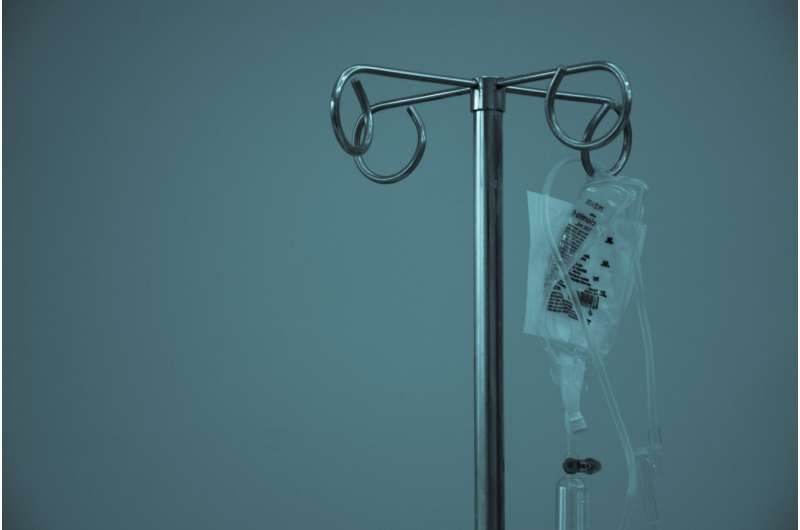Anesthesia Team Implements Algorithm to Manage IV Fluid Shortage During Natural Disaster

During a natural disaster-induced IV fluid shortage, MUSC's anesthesia team developed an innovative algorithm to conserve fluids without compromising patient safety. Learn how preparedness and teamwork ensured seamless care amid crisis.
In response to a significant IV fluid supply disruption caused by flooding that affected the Baxter manufacturing plant, the anesthesia department at the Medical University of South Carolina (MUSC) devised an innovative strategy to conserve fluids without compromising patient care. As the first anniversary of Hurricane Helene's flooding in North Carolina approaches, the team shares their approach to managing the crisis effectively.
The anesthesia team, led by Dr. Carlee A. Clark, emphasized the importance of preparedness in clinical practice, especially during emergencies. With over 80 locations across seven hospitals, MUSC faced the challenge of reducing IV fluid usage across its diverse settings while ensuring surgeries and procedures continued seamlessly.
To address this, the team set a goal to decrease IV fluid use by 60% around surgical procedures starting October 1. They adhered to NPO guidelines, allowing patients to hydrate orally with clear liquids up until two hours before their surgeries, resulting in better-than-expected hydration levels among patients upon arrival.
A key innovation was the development of a decision-making algorithm tailored for both inpatient and outpatient procedures. This was particularly impactful in outpatient centers, including a children's surgery unit, adult eye and orthopedic centers, a hospital-based surgery unit, and an endoscopy clinic. The algorithm helped the teams determine when IV fluids could be reduced or replaced with smaller syringes called flushes—used to administer medications and to minimalize fluid waste.
The strategy was carefully monitored over a month, assessing markers such as intraoperative hypotension, postoperative nausea, and recovery times. Findings showed no significant increase in complications, confirming that fluid management modifications did not adversely affect patient safety.
Post-crisis, the team reviewed their practices, shifting from routine one-liter fluid bags to more tailored sizes depending on the procedure and patient needs—focusing on patient care and resource conservation rather than cost. They also promoted preoperative hydration education for patients, which improved their overall experience.
The successful collaboration among perioperative nurses, surgeons, anesthesiologists, and pre-op staff exemplifies effective teamwork during a resource crisis. Clark highlighted the importance of collective problem-solving and adaptability, noting that the experience has led to lasting changes in their fluid management protocols.
This proactive approach during the IV fluid shortage demonstrates how healthcare providers can adapt swiftly to natural disasters and supply disruptions, ensuring continuity of care while conserving vital resources. The findings are published in "A&A Practice" under the study titled "Fluid Crisis Management: Intravenous Fluid Conservation Strategies and Outcomes After a Natural Disaster".
Stay Updated with Mia's Feed
Get the latest health & wellness insights delivered straight to your inbox.
Related Articles
AI Technology Enables Early Detection of Surgical Site Infections via Patient Photos
Mayo Clinic researchers have developed an AI system that accurately detects surgical site infections from patient-submitted photos, promising faster and more efficient postoperative care. This innovative technology could transform wound monitoring and early infection detection.
Research Finds No Connection Between Early Antibiotic Use and Childhood Autoimmune Diseases
A large-scale study finds no evidence that antibiotic exposure during pregnancy or early childhood increases the risk of developing autoimmune diseases in children, highlighting responsible antibiotic use.
Uncovering the Rise of GHB-Related Incidents and Regional Hotspots in Australia
A new study reveals a surge in GHB-related ambulance attendances across Australia, with regional hotspots like Geelong experiencing significant increases, emphasizing the need for targeted harm reduction efforts.
Insights into Ovarian Tumor Immune Microenvironment Offer New Therapeutic Avenues
Recent research into ovarian tumor immune landscapes uncovers distinct subtypes and immune evasion mechanisms, opening pathways for personalized immunotherapy strategies to improve patient outcomes.



